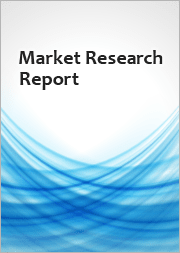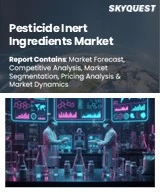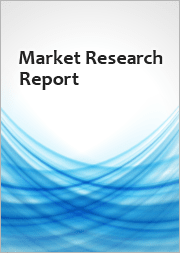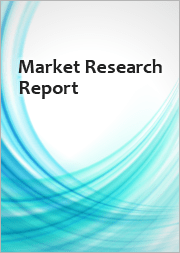
|
시장보고서
상품코드
1734923
세계의 농약 운반체 시장 : 유형별, 기능별, 제제 유형별, 작물별, 사용 방법별, 지역별 분석, 예측(-2032년)Pesticides Carriers Market Forecasts to 2032 - Global Analysis By Type (Solid Carriers, Liquid Carriers and Other Types), Function, Formulation Type, Crop, Application Mode and By Geography |
||||||
Stratistics MRC에 따르면 세계 농약 운반체 시장은 예측 기간 동안 CAGR 4.9%로 성장할 것으로 예상됩니다.
농약 운반체는 농약 유효성분의 안정성과 흡수성을 높이면서 표적 해충에 효과적인 전달을 촉진하는 필수적인 구성요소입니다. 따라서 농업 해충 방제에서 그 역할은 효과를 극대화하면서 환경에 미치는 영향을 최소화하는데 매우 중요합니다.
세계 인구 증가로 농업 생산성 향상
세계 인구 증가는 농업 생산성에 큰 압력을 가하고 있으며 효율적인 해충 관리 솔루션이 필요합니다. 증가하는 식량 수요를 충족시키기 위해 농부들은 화학적 응용의 효과를 향상시키는 첨단 농약 운반 기술을 점점 더 많이 채택하고 있습니다. 농약의 분포를 개선해, 흡수를 좋게 해 해충으로부터의 보호를 오래 유지시킵니다. 또한, 제제 방법의 혁신에 의해 농약의 성능이 최적화되어, 폐기물이 삭감되어, 수확물의 품질이 향상하고 있습니다.
환경에 미치는 영향에 대한 사회적 인식과 관심 증가
소비자와 규제기관은 보다 안전하고 지속가능한 대체 농약을 찾아 화학제제에 대한 규제강화로 이어지고 있습니다.
바이오 농약 운반체 생산 증가
생분해성, 무해한 운반체 재료의 연구가 진행됨에 따라 제조업체는 효율과 환경 책임의 균형을 고려한 솔루션의 개발에 주력하고 있습니다. 뿐만 아니라 환경 친화적인 농법의 규제 준수를 지원합니다.
화학 화합물에 대한 저항성 증가
합성 농약에의 지속적인 노출에 의해 저항성을 가지는 해충이 발생해, 종래의 화학 제제의 효율이 저하하고 있습니다.
COVID-19의 영향:
COVID-19의 대유행은 농약 운반체공급 체인을 혼란시켜 원재료의 이용가능성과 유통망에 영향을 주었습니다. 위기는 식량 안보에 대한 의식을 높이고 농부들이 신뢰할 수 있는 해충 관리 솔루션에 투자하도록 촉구했습니다.
예측 기간 동안 고체 캐리어 부문이 최대가 될 것으로 예상
고체 운반체 분야는 살충제 제제의 광범위한 사용으로 예측 기간 동안 최대 시장 점유율을 차지할 것으로 예측됩니다. 점토, 중합체, 과립과 같은 고체 운반체는 효과적인 분산과 장기간의 안정성을 보장하기 위해 농업 용도에 선호됩니다. 농약의 부착과 흡수를 향상시키는 능력은 효율을 향상시키고 더 나은 해충 방제의 결과를 가져옵니다.
예측기간 동안 방출제어형 분야는 가장 높은 CAGR이 예상된다.
예측기간 동안 방출제어기술의 혁신은 농약의 수명을 향상시키고 효과를 높이면서 환경오염을 최소화할 수 있어 방출제어 분야가 가장 높은 성장률을 보일 것으로 예측됩니다. 이 운반대는 시간에 따라 살충제의 방출을 조정하고 살포 빈도를 감소시키고 자원 이용을 최적화합니다. 정밀 농업에서 지속가능한 해충 제거 방법에 대한 요구가 증가함에 따라 방출 제어형 농약 운반체에 대한 투자가 촉진되고 있습니다.
최대 점유율을 차지하는 지역 :
예측 기간 동안 아시아태평양은 확대되는 농업 및 농약 운반체 기술의 채용 증가로 인해 최대 시장 점유율을 차지할 것으로 예측됩니다. 중국, 인도, 인도네시아 등 국가에서는 높은 농업 생산성을 유지하기 위해 해충 관리 방법의 급속한 진보를 볼 수 있습니다. 농업 효율성 개선과 농약 낭비 감소를 목표로 한 정부의 이니셔티브이 이 지역 시장 성장에 기여하고 있습니다.
CAGR이 가장 높은 지역 :
예측 기간 동안 정밀 농업과 친환경 농약 솔루션의 발전으로 북미가 가장 높은 CAGR을 나타낼 것으로 예측됩니다. 이 지역의 강력한 R&D 인프라는 농약 운반체의 제형에서 혁신을 촉진하고 효율성을 높이고 환경에 미치는 영향을 줄입니다. 게다가 지속가능한 농법에 대한 규제 당국의 지원 증가는 생분해성 담체와 바이오기반 운반체의 사용을 촉진하고 있습니다.
무료 사용자 정의 서비스 :
이 보고서를 구독하는 고객은 다음 무료 맞춤설정 옵션 중 하나를 사용할 수 있습니다.
- 기업 프로파일
- 추가 시장 기업의 종합적 프로파일링(3개사까지)
- 주요 기업의 SWOT 분석(3개사까지)
- 지역 세분화
- 고객의 관심에 응한 주요국 시장 추정, 예측 및 CAGR(주 : 타당성 확인에 따름)
- 경쟁 벤치마킹
- 제품 포트폴리오, 지리적 존재, 전략적 제휴에 기반한 주요 기업 벤치마킹
목차
제1장 주요 요약
제2장 서문
- 개요
- 이해관계자
- 조사 범위
- 조사 방법
- 데이터 마이닝
- 데이터 분석
- 데이터 검증
- 조사 접근
- 조사 자료
- 1차 조사 자료
- 2차 조사 정보원
- 전제조건
제3장 시장 동향 분석
- 성장 촉진요인
- 억제요인
- 기회
- 위협
- 용도 분석
- 신흥 시장
- COVID-19의 영향
제4장 Porter's Five Forces 분석
- 공급기업의 협상력
- 구매자의 협상력
- 대체품의 위협
- 신규 참가업체의 위협
- 경쟁 기업간 경쟁 관계
제5장 세계의 농약 운반체 시장 : 유형별
- 고체 캐리어
- 점토
- 실리카
- 활성탄
- 액체 캐리어
- 물
- 오일
- 용제
- 기타 유형
제6장 세계의 농약 운반체 시장 : 기능별
- 제어방출
- 타겟 배달
- 안정성 강화
- 분산 개선
- 변동성 감소
- 기타 기능
제7장 세계의 농약 운반체 시장 : 제제 유형별
- 유제(EC)
- 수화제(WP)
- 현탁액 농축물
- 과립
- 마이크로캡슐화 제제
- 기타 제형 유형
제8장 세계의 농약 운반체 시장 :작물별
- 곡물
- 지방종자 및 콩류
- 과일 및 채소
- 상업 작물
- 잔디 및 관상용 식물
- 기타 작물
제9장 세계의 농약 운반체 시장 : 사용 방법별
- 잎면 살포
- 토양처리
- 종자 처리
- 화학관류
- 훈증
- 기타 사용 방법
제10장 세계의 농약 운반체 시장 :지역별
- 북미
- 미국
- 캐나다
- 멕시코
- 유럽
- 독일
- 영국
- 이탈리아
- 프랑스
- 스페인
- 기타 유럽
- 아시아태평양
- 일본
- 중국
- 인도
- 호주
- 뉴질랜드
- 한국
- 기타 아시아태평양
- 남미
- 아르헨티나
- 브라질
- 칠레
- 기타 남미
- 중동 및 아프리카
- 사우디아라비아
- 아랍에미리트(UAE)
- 카타르
- 남아프리카
- 기타 중동 및 아프리카
제11장 주요 발전
- 계약, 파트너십, 협업, 합작투자
- 인수와 합병
- 신제품 발매
- 사업 확대
- 기타 주요 전략
제12장 기업 프로파일링
- Adjuvants Unlimited, LLC
- AkzoNobel NV
- BASF SE
- Clariant AG
- Croda International Plc
- Eastman Chemical Company
- Evonik Industries AG
- Gowan Company, LLC
- Huntsman Corporation
- Ishihara Sangyo Kaisha, Ltd.
- Lamberti SpA
- Mistral Industrial Chemicals
- Solvay SA
- Stepan Company
- Syngenta AG
According to Stratistics MRC, the Global Pesticides Carriers Market is growing at a CAGR of 4.9% during the forecast period. Pesticide carriers are essential components that facilitate the effective delivery of active pesticide ingredients to target pests while enhancing their stability and absorption. These carriers ensure uniform dispersion, controlled release, and improved adherence, optimizing application efficiency. Common carriers include water, oils, polymers, clays, and organic solvents, selected based on pesticide type and intended usage. Their role in agricultural pest control is critical in minimizing environmental impact while maximizing effectiveness. Recent advancements in carrier technology focus on biodegradable and eco-friendly materials, reducing chemical residues and promoting sustainable pest management practices for improved crop protection and ecological balance.
Market Dynamics:
Driver:
Increasing global population necessitates higher agricultural productivity
The rising global population is placing significant pressure on agricultural productivity, necessitating efficient pest management solutions. To meet growing food demand, farmers are increasingly adopting advanced pesticide carrier technologies that enhance the effectiveness of chemical applications. These carriers improve pesticide distribution, ensuring better absorption and prolonged protection against pests. Additionally, innovations in formulation methods are optimizing pesticide performance, reducing waste and improving yield quality.
Restraint:
Increasing public awareness and concern regarding the environmental impact
Consumers and regulatory bodies are demanding safer and more sustainable alternatives, leading to stricter regulations on chemical formulations. Issues such as soil contamination, water pollution, and adverse effects on beneficial organisms have raised alarm over pesticide carrier materials. Consequently, manufacturers are under pressure to develop environmentally friendly carriers that minimize residues and mitigate ecological harm.
Opportunity:
Increasing production of bio-based pesticide carriers
The increasing research into biodegradable and non-toxic carrier materials, manufacturers are focusing on developing solutions that balance efficiency with environmental responsibility. These advancements not only reduce chemical residues in agricultural ecosystems but also support regulatory compliance for eco-conscious farming practices. Innovations in nanotechnology and encapsulation techniques further enhance pesticide efficacy while minimizing unintended environmental exposure.
Threat:
Increasing resistance to chemical compounds
Continuous exposure to synthetic pesticides has led to the development of resistant pest populations, reducing the efficiency of conventional chemical formulations. As a result, farmers and agricultural researchers are exploring alternative pest management strategies, including integrated pest control methods. Additionally, stricter regulations on chemical pesticides are pushing manufacturers to reconsider formulations and carrier materials.
Covid-19 Impact:
The COVID-19 pandemic disrupted pesticide carrier supply chains, affecting raw material availability and distribution networks. Initial lockdown measures led to delays in manufacturing and transportation, causing temporary shortages across agricultural sectors. However, the crisis also heightened awareness of food security, prompting farmers to invest in reliable pest management solutions. The pandemic accelerated research into sustainable agricultural practices, reinforcing the demand for bio-based and environmentally friendly carriers.
The solid carriers segment is expected to be the largest during the forecast period
The solid carriers segment is expected to account for the largest market share during the forecast period driven by its widespread use in pesticide formulations. Solid carriers such as clays, polymers, and granules ensure effective dispersion and prolonged stability, making them a preferred choice for agricultural applications. Their ability to enhance pesticide adhesion and absorption improves efficiency, resulting in better pest control outcomes.
The controlled release segment is expected to have the highest CAGR during the forecast period
Over the forecast period, the controlled release segment is predicted to witness the highest growth rate owing to innovations in controlled-release technology are improving pesticide longevity, minimizing environmental contamination while enhancing effectiveness. These carriers regulate pesticide release over time, reducing application frequency and optimizing resource utilization. The growing need for sustainable pest control methods in precision agriculture is driving investments in controlled-release pesticide carriers.
Region with largest share:
During the forecast period, the Asia Pacific region is expected to hold the largest market share due to expansive agricultural industry and increasing adoption of pesticide carrier technologies. Countries such as China, India, and Indonesia are witnessing rapid advancements in pest management practices to sustain high agricultural productivity. Government initiatives aimed at improving farming efficiency and reducing pesticide wastage are contributing to regional market growth.
Region with highest CAGR:
Over the forecast period, the North America region is anticipated to exhibit the highest CAGR driven by advancements in precision agriculture and eco-friendly pesticide solutions. The region's strong research and development infrastructure is fostering innovations in pesticide carrier formulations, enhancing efficiency and reducing environmental impact. Additionally, increasing regulatory support for sustainable farming practices is encouraging the use of biodegradable and bio-based carriers.
Key players in the market
Some of the key players in Pesticides Carriers Market include Adjuvants Unlimited, LLC, AkzoNobel N.V., BASF SE, Clariant AG, Croda International Plc, Eastman Chemical Company, Evonik Industries AG, Gowan Company, LLC, Huntsman Corporation, Ishihara Sangyo Kaisha, Ltd., Lamberti S.p.A., Mistral Industrial Chemicals, Solvay SA, Stepan Company, and Syngenta AG.
Key Developments:
In April 2025, Lamberti USA expanded its operations by acquiring the Covestro production site in East Providence, Rhode Island. This acquisition enhances Lamberti's manufacturing capabilities in the United States.
In May 2025, Huntsman announced officer changes, with Tony Hankins retiring and Steen Weien Hansen appointed as Division President of Huntsman Polyurethanes. The company also declared its first-quarter 2025 earnings and a common dividend.
In January 2025, AkzoNobel announced plans to lay off up to 16% of its workforce in France, approximately 211 employees, as part of a global restructuring effort. The company will invest €22 million into its Montataire site to enhance decorative paint production.
Types Covered:
- Solid Carriers
- Liquid Carriers
- Other Types
Functions Covered:
- Controlled Release
- Targeted Delivery
- Enhanced Stability
- Improved Dispersion
- Reduced Volatility
- Other Functions
Formulation Types Covered:
- Emulsifiable Concentrates (EC)
- Wettable Powders (WP)
- Suspension Concentrates
- Granules
- Microencapsulated Formulations
- Other Formulation Types
Crops Covered:
- Cereals & Grains
- Oilseeds & Pulses
- Fruits & Vegetables
- Commercial Crops
- Turf & Ornamental
- Other Crops
Application Modes Covered:
- Foliar Application
- Soil Treatment
- Seed Treatment
- Chemigation
- Fumigation
- Other Application Modes
Regions Covered:
- North America
- US
- Canada
- Mexico
- Europe
- Germany
- UK
- Italy
- France
- Spain
- Rest of Europe
- Asia Pacific
- Japan
- China
- India
- Australia
- New Zealand
- South Korea
- Rest of Asia Pacific
- South America
- Argentina
- Brazil
- Chile
- Rest of South America
- Middle East & Africa
- Saudi Arabia
- UAE
- Qatar
- South Africa
- Rest of Middle East & Africa
What our report offers:
- Market share assessments for the regional and country-level segments
- Strategic recommendations for the new entrants
- Covers Market data for the years 2024, 2025, 2026, 2028, and 2032
- Market Trends (Drivers, Constraints, Opportunities, Threats, Challenges, Investment Opportunities, and recommendations)
- Strategic recommendations in key business segments based on the market estimations
- Competitive landscaping mapping the key common trends
- Company profiling with detailed strategies, financials, and recent developments
- Supply chain trends mapping the latest technological advancements
Free Customization Offerings:
All the customers of this report will be entitled to receive one of the following free customization options:
- Company Profiling
- Comprehensive profiling of additional market players (up to 3)
- SWOT Analysis of key players (up to 3)
- Regional Segmentation
- Market estimations, Forecasts and CAGR of any prominent country as per the client's interest (Note: Depends on feasibility check)
- Competitive Benchmarking
- Benchmarking of key players based on product portfolio, geographical presence, and strategic alliances
Table of Contents
1 Executive Summary
2 Preface
- 2.1 Abstract
- 2.2 Stake Holders
- 2.3 Research Scope
- 2.4 Research Methodology
- 2.4.1 Data Mining
- 2.4.2 Data Analysis
- 2.4.3 Data Validation
- 2.4.4 Research Approach
- 2.5 Research Sources
- 2.5.1 Primary Research Sources
- 2.5.2 Secondary Research Sources
- 2.5.3 Assumptions
3 Market Trend Analysis
- 3.1 Introduction
- 3.2 Drivers
- 3.3 Restraints
- 3.4 Opportunities
- 3.5 Threats
- 3.6 Application Analysis
- 3.7 Emerging Markets
- 3.8 Impact of Covid-19
4 Porters Five Force Analysis
- 4.1 Bargaining power of suppliers
- 4.2 Bargaining power of buyers
- 4.3 Threat of substitutes
- 4.4 Threat of new entrants
- 4.5 Competitive rivalry
5 Global Pesticides Carriers Market, By Type
- 5.1 Introduction
- 5.2 Solid Carriers
- 5.2.1 Clays
- 5.2.2 Silica
- 5.2.3 Activated Carbon
- 5.3 Liquid Carriers
- 5.3.1 Water
- 5.3.2 Oils
- 5.3.3 Solvents
- 5.4 Other Types
6 Global Pesticides Carriers Market, By Function
- 6.1 Introduction
- 6.2 Controlled Release
- 6.3 Targeted Delivery
- 6.4 Enhanced Stability
- 6.5 Improved Dispersion
- 6.6 Reduced Volatility
- 6.7 Other Functions
7 Global Pesticides Carriers Market, By Formulation Type
- 7.1 Introduction
- 7.2 Emulsifiable Concentrates (EC)
- 7.3 Wettable Powders (WP)
- 7.4 Suspension Concentrates
- 7.5 Granules
- 7.6 Microencapsulated Formulations
- 7.7 Other Formulation Types
8 Global Pesticides Carriers Market, By Crop
- 8.1 Introduction
- 8.2 Cereals & Grains
- 8.3 Oilseeds & Pulses
- 8.4 Fruits & Vegetables
- 8.5 Commercial Crops
- 8.6 Turf & Ornamental
- 8.7 Other Crops
9 Global Pesticides Carriers Market, By Application Mode
- 9.1 Introduction
- 9.2 Foliar Application
- 9.3 Soil Treatment
- 9.4 Seed Treatment
- 9.5 Chemigation
- 9.6 Fumigation
- 9.7 Other Application Modes
10 Global Pesticides Carriers Market, By Geography
- 10.1 Introduction
- 10.2 North America
- 10.2.1 US
- 10.2.2 Canada
- 10.2.3 Mexico
- 10.3 Europe
- 10.3.1 Germany
- 10.3.2 UK
- 10.3.3 Italy
- 10.3.4 France
- 10.3.5 Spain
- 10.3.6 Rest of Europe
- 10.4 Asia Pacific
- 10.4.1 Japan
- 10.4.2 China
- 10.4.3 India
- 10.4.4 Australia
- 10.4.5 New Zealand
- 10.4.6 South Korea
- 10.4.7 Rest of Asia Pacific
- 10.5 South America
- 10.5.1 Argentina
- 10.5.2 Brazil
- 10.5.3 Chile
- 10.5.4 Rest of South America
- 10.6 Middle East & Africa
- 10.6.1 Saudi Arabia
- 10.6.2 UAE
- 10.6.3 Qatar
- 10.6.4 South Africa
- 10.6.5 Rest of Middle East & Africa
11 Key Developments
- 11.1 Agreements, Partnerships, Collaborations and Joint Ventures
- 11.2 Acquisitions & Mergers
- 11.3 New Product Launch
- 11.4 Expansions
- 11.5 Other Key Strategies
12 Company Profiling
- 12.1 Adjuvants Unlimited, LLC
- 12.2 AkzoNobel N.V.
- 12.3 BASF SE
- 12.4 Clariant AG
- 12.5 Croda International Plc
- 12.6 Eastman Chemical Company
- 12.7 Evonik Industries AG
- 12.8 Gowan Company, LLC
- 12.9 Huntsman Corporation
- 12.10 Ishihara Sangyo Kaisha, Ltd.
- 12.11 Lamberti S.p.A.
- 12.12 Mistral Industrial Chemicals
- 12.13 Solvay SA
- 12.14 Stepan Company
- 12.15 Syngenta AG



















